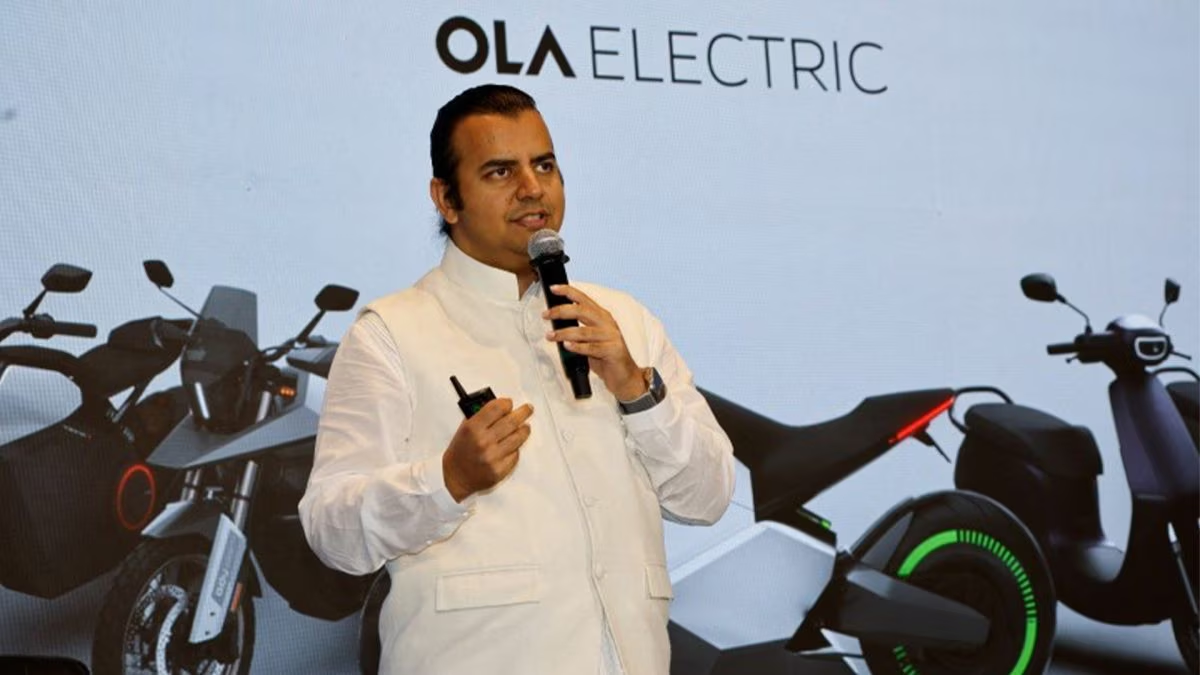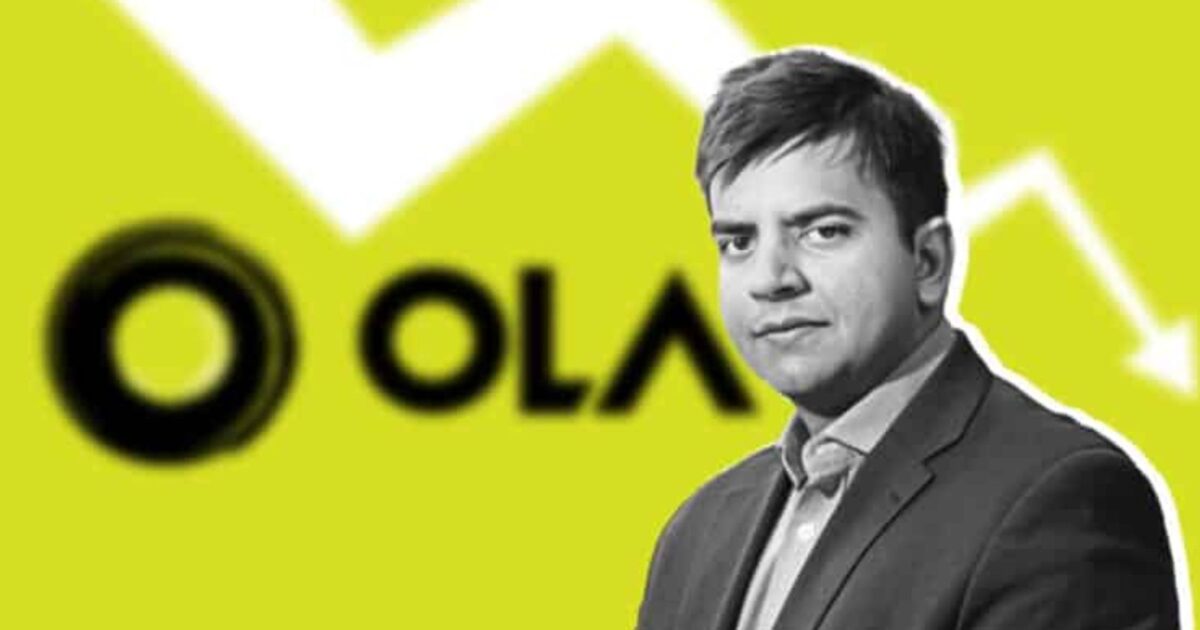Ola Will Be Laying Off Another 500 Employees To Expand !
Ola Electric is undergoing a major restructuring that will eliminate the jobs of around 12% of its workforce.

Ola Electric is going through a major restructuring shift that will take away the jobs of its 500 employees, which is about 12% of its workforce of 4,000. According to sources in the know, the restructuring process has been ongoing for several months now. The company says its aim is to eliminate unnecessary roles, increase operational efficiency, expand margins, and ultimately gain profitability.
This is not the first time Ola Electric has taken this kind of step. Similar laying-off patterns were seen in 2022, when the company went for an IPO, which then happened two years later, in August 2024.
The first post-IPO financial performance of Q2 FY25 saw revenues grow 38.5% to Rs 1,240 crore, thanks to a very healthy 73.6% increase in deliveries, which reached 98,619 units, compared to 56,813 units in Q2 FY24. Yet, growth aside, this latest wave of layoffs betrays the hope for sustainable profitability.
Service Crisis And Quality Concerns Cripple Operations
 The current reorganisation comes at a rather challenging time for Ola Electric, as growing criticism over the quality of its products and service is mounting against the company. Last month’s social media controversy involving its CEO Bhavish Aggarwal, in retrospect, had set the stage for the publicised issues. The incident, which saw Aggarwal engage in an ugly spat with comedian Kunal Kamra, had led to an immediate 8% tank in share prices. The row burst forth when Kamra published pictures of Ola Electric scooters covered in dust at a service center while questioning the response of the company to customer complaints.
The current reorganisation comes at a rather challenging time for Ola Electric, as growing criticism over the quality of its products and service is mounting against the company. Last month’s social media controversy involving its CEO Bhavish Aggarwal, in retrospect, had set the stage for the publicised issues. The incident, which saw Aggarwal engage in an ugly spat with comedian Kunal Kamra, had led to an immediate 8% tank in share prices. The row burst forth when Kamra published pictures of Ola Electric scooters covered in dust at a service center while questioning the response of the company to customer complaints.
Aggarwal replied in a rather furious, attacking manner, which was then criticised by people and even his investors.
The impact of this controversy had severe repercussions on investor sentiment. Most notable among these was investor Ganeshan Iyer, who publicly pronounced an exit from the company by selling his Ola shares, which had a loss of ₹40,000. “Bhavish Aggarwal’s arrogance has cost me as an investor. I can’t expect much from this company. No future with such a toxic person leading it,” Iyer had written on X. Other shareholders expressed similar sentiments. For instance, Piyushadvised Aggarwal to focus on their customer service rather than airing conflicts on social media.
That had brought the share price down to a miserable ₹90.26 apiece during that period, with investors and market observers decrying it from all sides. “Ola has drained its investor’s wealth. If there is so much disdain for your customers, employees and investors, you will never create wealth,” noted one market observer on social media. That earlier controversy seems to have partly prompted this restructuring decision. The company faces both reputational and operational challenges.
 The MHI has asked the Automotive Research Association of India to inquire into whether Ola Electric is fulfilling its warranty obligations and keeping up enough service centers. This assumes significance since the incentives the company earns from its production are subject to specific requirements that are aligned with quality and safety standards. Further, such incentives involve taxpayer money.
The MHI has asked the Automotive Research Association of India to inquire into whether Ola Electric is fulfilling its warranty obligations and keeping up enough service centers. This assumes significance since the incentives the company earns from its production are subject to specific requirements that are aligned with quality and safety standards. Further, such incentives involve taxpayer money.
Adding to the woes of the company is the show-cause notice issued by the CCPA concerning charges of misleading advertisements and unfair trade practices. At such times, these controversies may see a substantial knock on consumer trust and sales momentum, which can push buyers into the hands of competitors with better service networks.
Market Share Loss And Increased Competition
 The company’s market dominance is weakening, as its market share falls from over 30% in August to 27% in September 2024, which reflects the growth of traditional automotive manufacturers in electric two-wheelers. Bajaj Auto has grown remarkably, with a year-on-year sales increase of 166% and market share expansion from 19% to over 21%. Meanwhile, Ather Energy has also picked up steam, and its market share has risen from 12% to 14%.
The company’s market dominance is weakening, as its market share falls from over 30% in August to 27% in September 2024, which reflects the growth of traditional automotive manufacturers in electric two-wheelers. Bajaj Auto has grown remarkably, with a year-on-year sales increase of 166% and market share expansion from 19% to over 21%. Meanwhile, Ather Energy has also picked up steam, and its market share has risen from 12% to 14%.
The changes in government subsidies under the FAME scheme have continuously been behind fluctuations in the electric two-wheeler market this year. However, the recently sanctioned ‘PM E-DRIVE Scheme’, with an initial budget of INR 10,900 Cr over two years, would restore momentum to EV adoption by targeting production of 24.79 Lakh electric two-wheelers. This is in addition to that which has already been undertaken by the earlier FAME-II scheme for the development of 10 Lakh vehicles.
Industry specialists argue that simply, legacy automakers differ from the new-age EV startups in their approach. Companies like Bajaj and TVS Motor have decades of experience in managing product recalls and have large dealer networks. An angel investor based in Delhi NCR pointed to the inherent disadvantage of Ola Electric’s D2C model, saying, “You cannot sell into one district and hope that the local mechanic will know how to fix the bike.”
Financial Performance And Response From The Stock Market
The stock performs the same way as it is bearing the mounting crisis. Since hitting a post-listing high of INR 157 in August, shares of Ola Electric have crashed by a whopping 42.1% as it closed at INR 90.81 lately. While some brokerages like Goldman Sachs and BofA Securities keep a bullish view with price targets of INR 160 per share, the market seems to grow increasingly sceptical of the company’s trajectory.
On the financial side, the consolidated net loss of Ola Electric in Q1 FY25 increased by 30% YoY to stand at INR 347 Cr, though it saw an improvement on a sequential basis. The Q2 FY25 results, which are to be reported in early November, will be critical in understanding whether this sales decline weighs on the wallet of Ola Electric. Bernstein says that Ola Electric is slated for EBITDA profitability, given the highest gross margins with peers.
Future Prospects And Strategic Strategies
Ola Electric is still aggressively pushing for its ambitious expansion plans. The company currently operates 782 company-owned stores, each averaging 130 sales per quarter – reportedly 2-3 times the industry average. Plans are in place to expand this network to 2,000 locations by March 2025, along with co-located service infrastructure.
The company has also launched a ‘HyperService’ initiative, promising a one-day resolution for service issues in an attempt to address customer complaints. That would be coupled with Ola Electric acknowledging that it needs to invest heavily into training programs, unlike its competitors like Ather Energy, which conducts regular skilling and refresher courses for its dealers and technicians.
Ola Electric’s product strategy, however, continues to be aggressive, with six models presently available across a price range of Rs 75,000 to Rs 150,000. The company is targeting the launch of 20 new products in the next two years and claims that it plans at least one new product a quarter, along with other two-wheeler and three-wheeler categories. In addition, the company is making further progress in cell manufacturing as part of its vertical integration strategy. The Ola Gigafactory has produced more than 20,000 cells in Q2 FY25.
However, success in these initiatives would depend largely on how well the company can absorb its core issues with regards to service quality and customer satisfaction. For example, according to Rajat Mahajan, a partner at Deloitte, after-sales support must become the next concern for electric two-wheeler makers, partly due to projections that electric two-wheelers would constitute 50-55% of the total market by 2030.
The restructuring and layoffs at Ola Electric are really the straw that breaks the camel’s back in their journey, given the company’s growth and innovation ambitions. But overcoming present service quality challenges and market share erosion in the face of intensifying competition is going to be the key factor in establishing the future prospects of the company in the country’s rapidly evolving electric vehicle market.
The experience of this company is similar to that of Xiaomi in the Indian market in the earlier days when service-related challenges characharacterizedy. But we cannot forget that in the automobile sector, the stakes are much higher, it involves the product safety that could actually cost lives.




